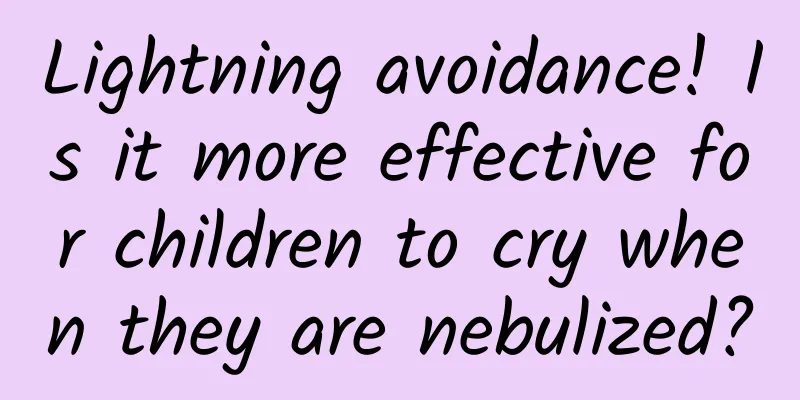Lightning avoidance! Is it more effective for children to cry when they are nebulized?

|
Nebulization refers to the process of turning liquid medicine into aerosol and inhaling it through the airway to achieve a therapeutic effect. Currently, the most commonly used one is an air compression nebulizer, which uses compressed air to form a high-speed airflow through a relatively small pipe opening. The negative pressure generated will drive the liquid medicine and spray it into mist-like particles, which are relatively easy to be inhaled into the mucous membranes of the airway, including the throat, trachea, bronchi, alveoli, etc., and are usually widely used in respiratory diseases. She was crying while having the nebulizer sprayed, but her glottis was closed and the nebulizer medicine could not enter the airway at all, let alone the trachea and bronchi. When crying, the breathing pattern will change significantly, mainly manifested as rapid and shallow breathing, and most of the nebulized medicine will be deposited in the throat, rather than the deep and slow breathing required for nebulization treatment. This breathing pattern is not conducive to the mist particles to penetrate into the small bronchi of the lungs, thereby reducing the treatment effect. Moreover, when crying, a large amount of tears and nasal secretions may increase, and tears and snot will form a barrier to prevent the mist particles from entering the respiratory tract through the nasal cavity or mouth. In addition, the swallowing action when crying may also cause some mist particles to be accidentally swallowed into the digestive tract instead of directly acting on the respiratory tract. So, there is one effective method that parents think is effective. Doesn't crying cause more air to be sucked into the stomach? What should I pay attention to after atomization? Forgot to dry your mouth and nose and rinse your mouth after atomization. Many nebulized drugs contain hormones, so the small matter of "wiping the mouth and nose dry" should never be ignored. Parents of young children, in particular, should not "get it over with" after the nebulization is completed, but should use a wrung-out wet towel to dry the child's face and mouth and nose after each nebulization inhalation. "Because the skin on the face of young children is thin and rich in blood vessels, residual liquid medicine can be absorbed and may be absorbed by the skin, forming white spots. In addition, after the nebulization of hormone drugs is finished, remember to rinse your child's mouth (babies drink saliva). This action is to reduce the residual irritation of the nebulized drug to the oral cavity and reduce the place where the drug should not go. If the drug acts on the throat, please note that you should not drink water 15 minutes after the nebulization is completed, otherwise it will affect the effect of the drug, such as interferon. In addition, for young babies, try not to eat half an hour before nebulization inhalation to avoid aerosol irritation of the airway during nebulization inhalation and cause vomiting. |
>>: National Disability Prevention Day poster
Recommend
Can pregnant women eat catfish? It has a good tonic effect.
Women can eat more fish after they become pregnan...
How to treat dysmenorrhea completely?
Dysmenorrhea is an indescribable pain for female ...
Can pregnant women apply anti-itch ointment?
Pregnant women are prone to various discomforts d...
Is there still hope for a blank white board after 11 days of ovulation?
We all know that for a woman to become pregnant, ...
What is the cause of urethrovaginal fistula?
I believe that many friends do not want to have a...
What does Houttuynia cordata taste like? Do you need to blanch Houttuynia cordata for cold salad?
Houttuynia cordata contains more trace elements, ...
The true mask of "upturned buttocks" - pelvic tilt (I)
A beautiful figure requires curves in all the rig...
How long does it take for a cracked nipple to heal?
Nipple pain is common during breastfeeding. In mi...
Treatment of postpartum episiotomy wound
Many women undergo episiotomy during the delivery...
The latest artificial insemination success rate
Artificial insemination is a relatively common me...
What are the precautions for menstruation
Women can start menstruating when they enter chil...
Treatment for abdominal pain in pregnant women
I believe that all of us have experienced abdomin...
What are the customs of the Beginning of Autumn? The meaning and traditions of the Beginning of Autumn
In the 24 solar terms, the Beginning of Autumn do...
What to do if breastfeeding mothers always suffer from insomnia
Breastfeeding mothers are prone to insomnia, whic...
What is the fastest way to eat breast enlargement?
A sexy body is what every woman wants to have, bu...









